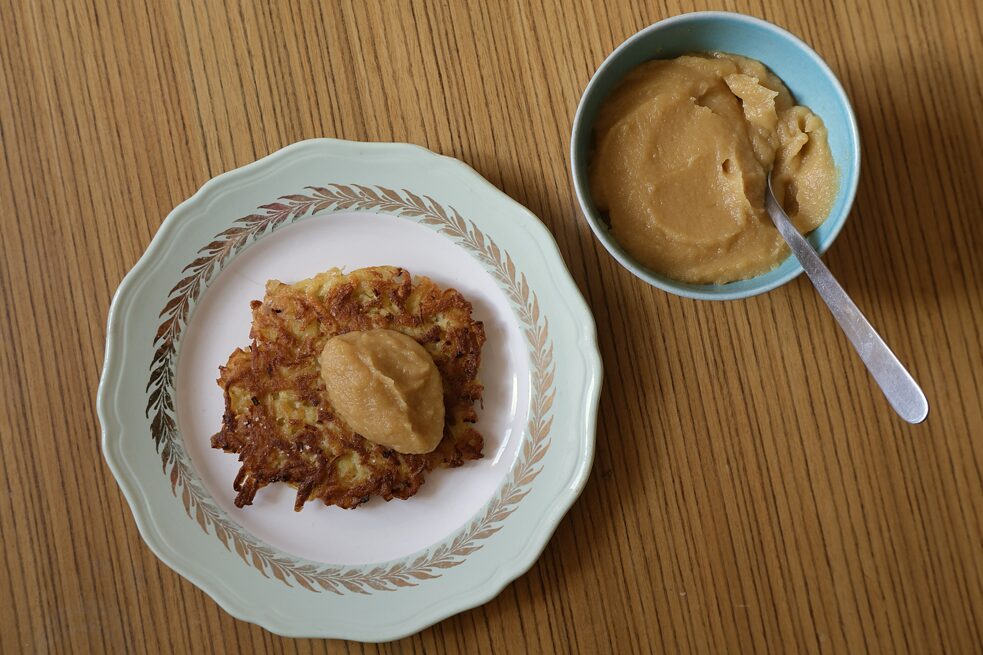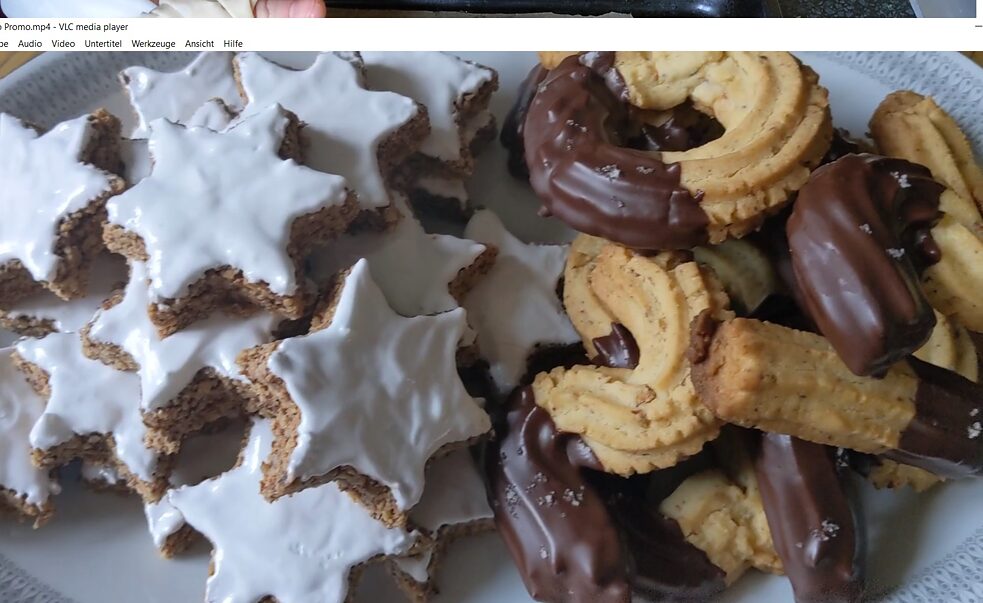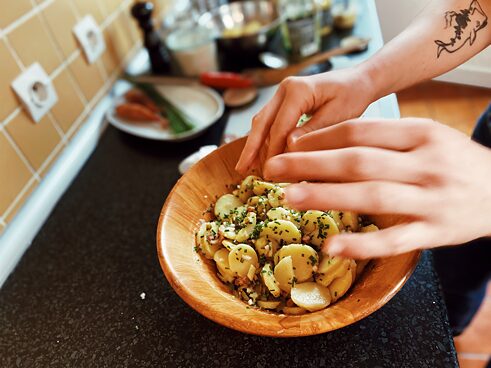Cooking is like music - love is the most imporant ingredient
Johanna Maier, celebrated Austrian chef
To conclude our third season of Cuisinez avec Annika !, we have compiled all the recipes cooked so far in a cookbook. We have prepared three versions, ePub for your reader and a pdf version in small web resolution or generous print resolution.
Download here:
"Cuisinez avec Annika" in the Onleihe
Kartoffelpuffer
For this workshop, Annika decided to present the famous Kartoffelpuffer und Apfelmus in a slightly modernized version and in a different context: she will show you how to make Kartoffelpuffer with an apple miso sauce as well as a second topping consisting of smoked salmon and a cold Quark and herb dip. To go with it, we’ll be making a lovely winter salad with kale, pears, walnuts and blue cheese. This combination can easily become part of a cozy Sunday brunch with friends or family.
Rotkraut & Kartoffelknödel
There are many traditional Christmas meals in Germany (often influenced by different regions), among which you’ll find for example roasted goose, Rinderrouladen (braised beef rolls), Kartoffelsalat & Würstchen (potato salad & sausages), Sauerbraten (beef or pork roast marinated in vinegar) and many more. But there are certain elements that are present on many tables at Christmas: Rotkraut & Kartoffelknödel (braised red cabbage & potato dumplings). They’re classic side dishes for all kinds of roasts and braises - the spices in braised cabbage complement many kinds of meat and potato dumplings are the perfect vehicle for sauces and gravies.
Download the recipe here (in French) :Zimtsterne & Spritzgebäck
Plätzchen (“little cookies”) play a big part in Germany’s culinary Christmas traditions. They’re little cookies that the whole family bakes and enjoys together in big quantities during the holiday season. It’s the perfect opportunity to get together in the kitchen and enjoy some sweet treats. Among the all-time Plätzchen classics you’ll find Zimtsterne, Spritzgebäck, Elisenlebkuchen, Kokosmakronen, Vanillekipferl and Buttergebäck (to name just a few).
During this first of two cooking workshops in December, our chef Annika will introduce you to the German Christmas tradition of Plätzchenbacken (“cookie baking”) by showing you how to make two kinds of classic Plätzchen: Zimtsterne (cinnamon stars) and Spritzgebäck (shortbread cookies).Download the recipe here (in French) :
Käsespätzle
Spätzle are probably one of the most famous dishes of German cuisine. These irregularly shaped “noodles” (sometimes also described as dumplings) originated in the southern region of Swabia and are a traditional side dish to meats. However, they can very well hold their own as Käsespätzle: they get smothered in melted cheese and topped with crunchy Röstzwiebeln (caramelised onions) and fresh chives.
During our November workshop, chef Annika showed how to prepare this iconic German dish.
Download the recipe here (in French):
Zwiebelkuchen
We've started the 2021 fall season with a wonderful Zwiebelkuchen!
October is the month of "Federweißer" (sometimes also called "neuer Wein", which means "new wine") - a slightly alcoholic wine (around 5%) that’s still in the fermentation process and therefore in between the stages of grape juice and wine. And in Germany, whoever says Federweißer thinks Zwiebelkuchen (onion pie). It's a very traditional and perfect combination for the coming fall.
Download the recipe here (in French):Asparagus
May is all about asparagus in Germany and you’ll find this wonderful vegetable (in Germany most often in its white version) prepared in all shapes and forms: as salads & soups, with potatoes and Sauce Hollandaise, roasted, and so on.
In this workshop, Annika combined elements from different traditional German recipes into one fresh spring dish: green asparagus, rolled savory pancakes with ham and green sauce.
Green sauce is originally from Frankfurt and is traditionally eaten cold with boiled potatoes and hard-boiled eggs. It gets its beautiful green colour from seven different kinds of fresh herbs.
The savory pancakes Annika will show us how to make are a typical side-dish for asparagus she grew up eating. They’re often rolled with ham, but can also be enjoyed plain.
Maultaschen
In this workshop, chef Annika showed us how to make an absolute classic of Swabian cuisine: Maultaschen. These traditional rectangular “German dumplings” consist of freshly made pasta dough and a filling whose main components are ground meat and spinach.
For those of you who don’t eat meat, we also provide a vegetarian, yet slightly less traditional recipe.










































